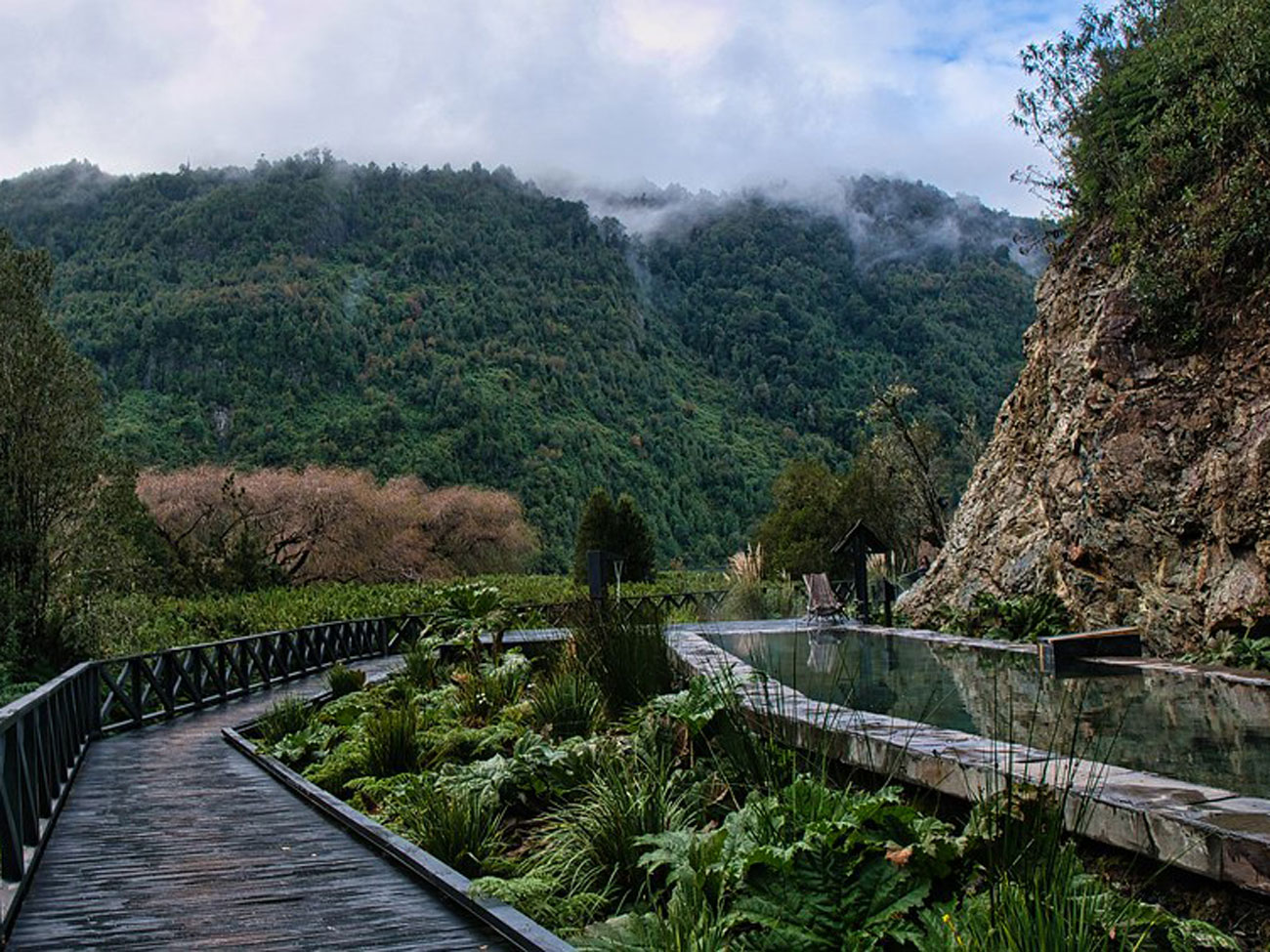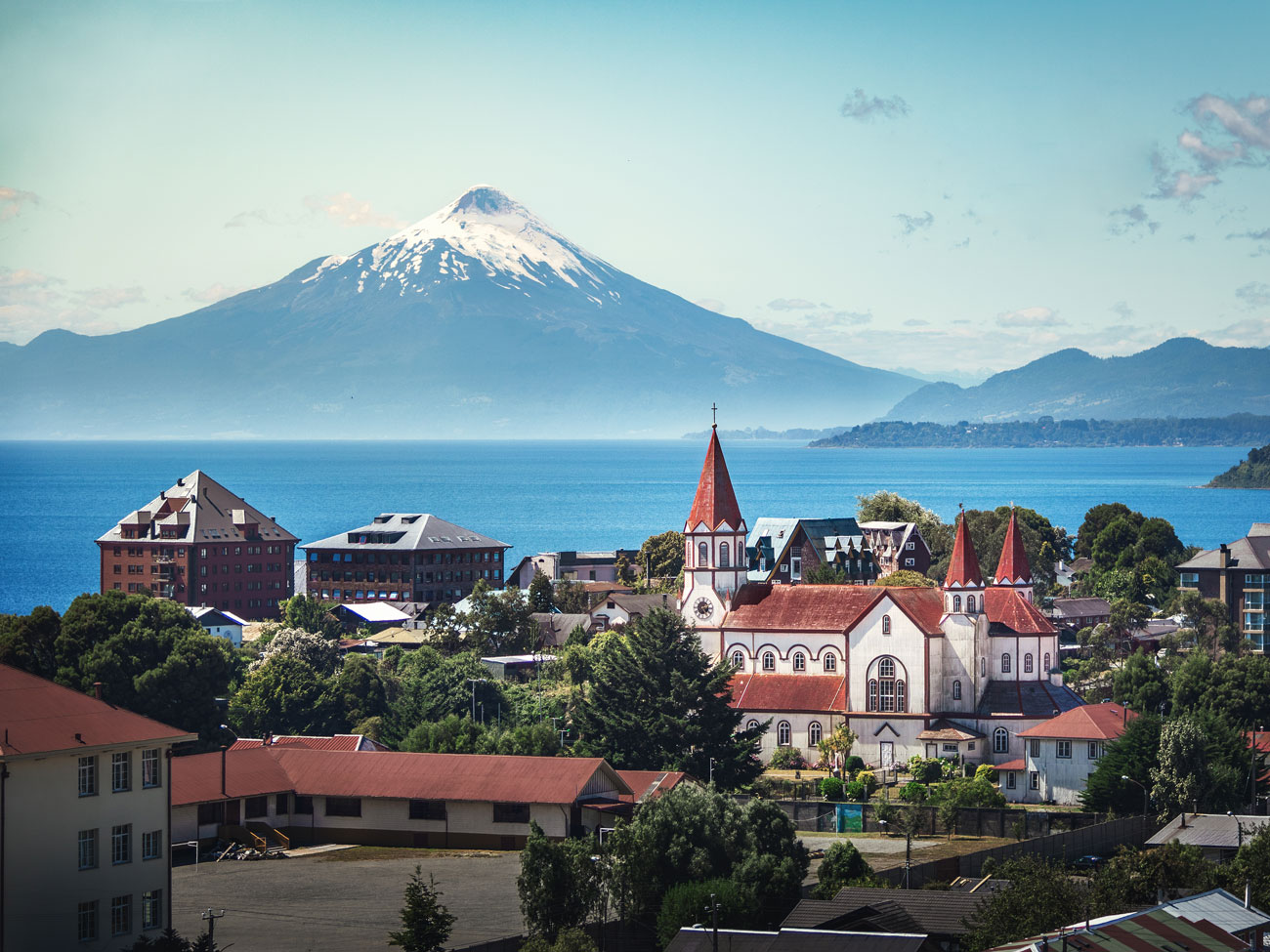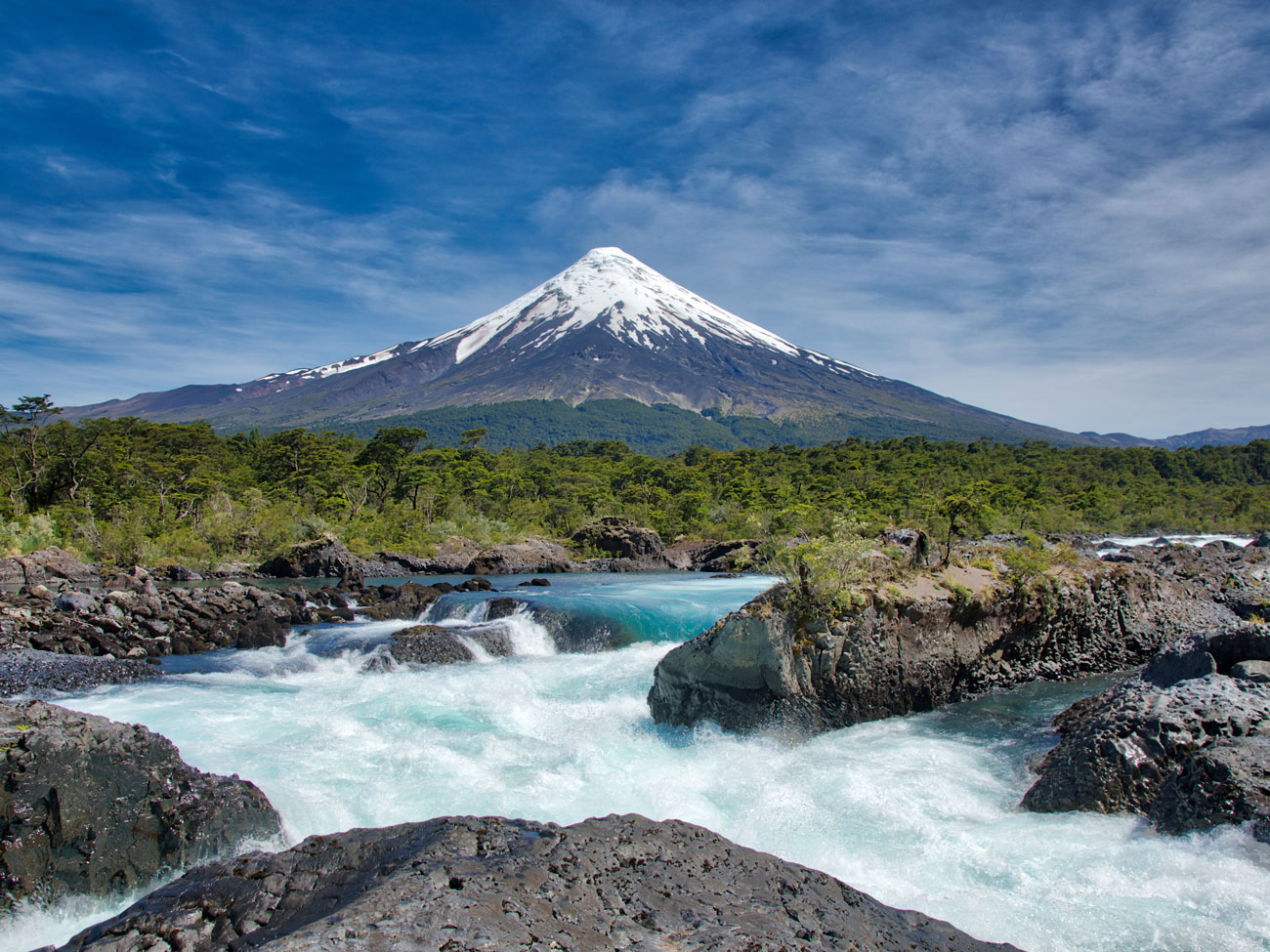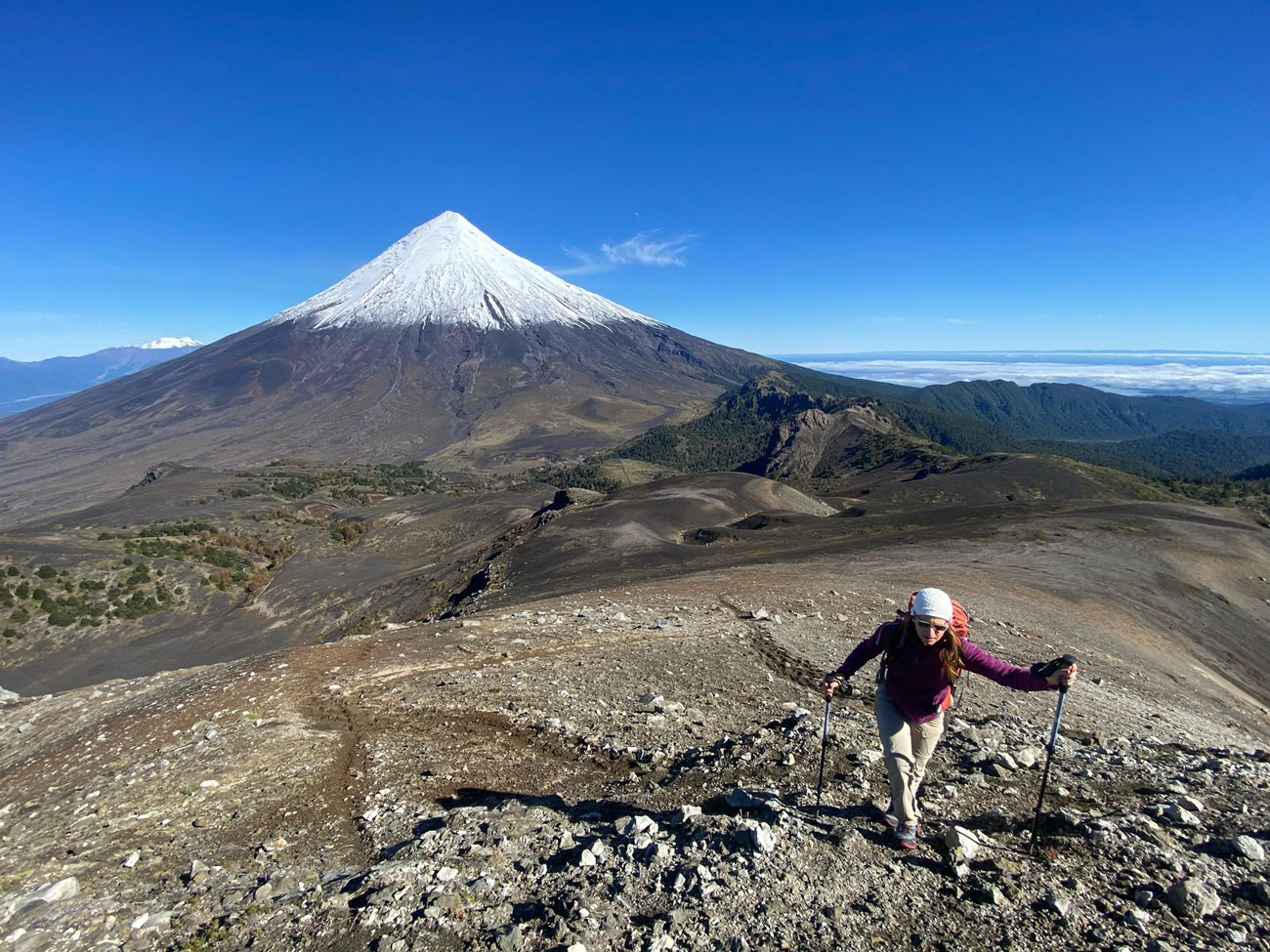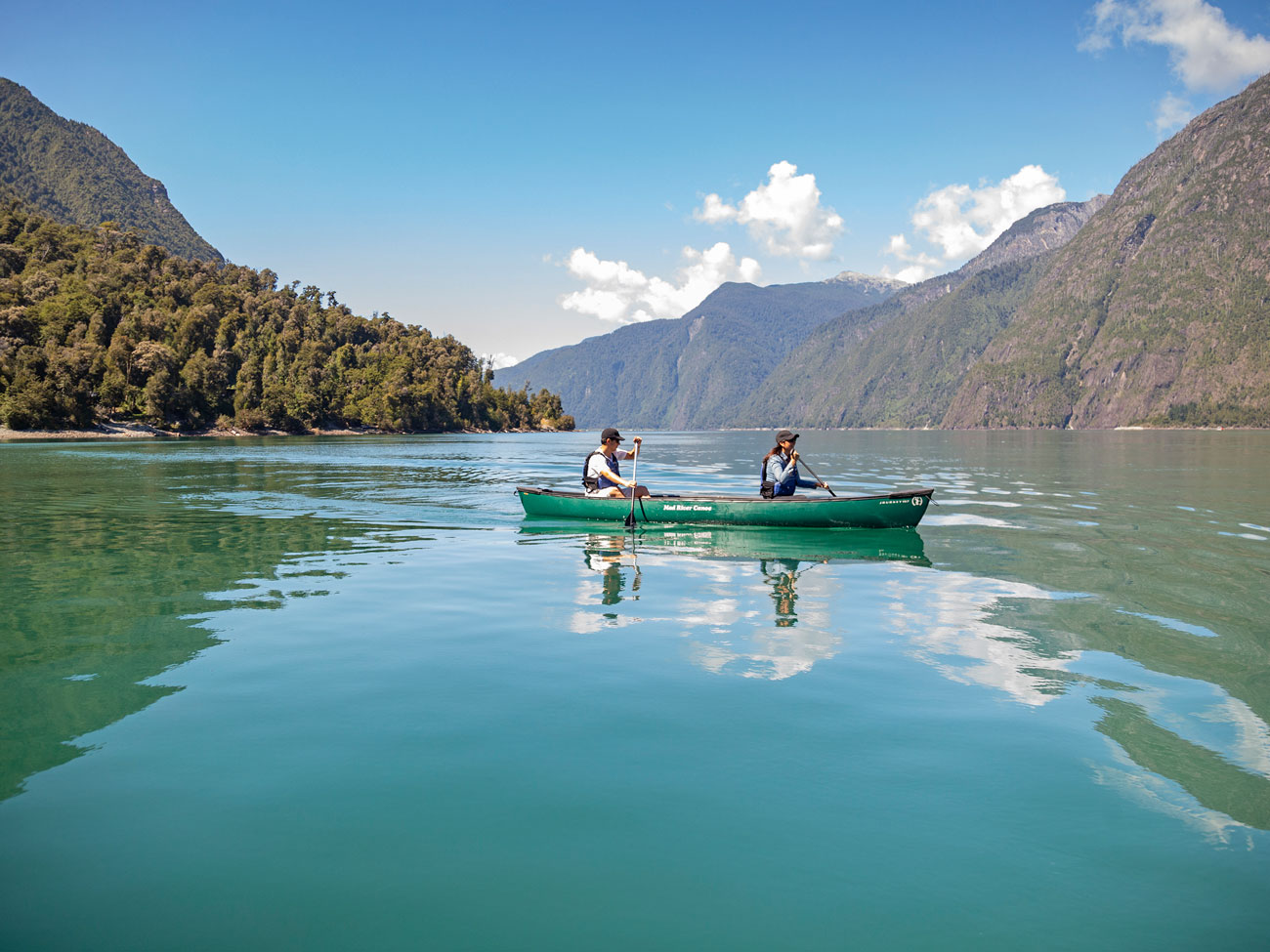Lake District: Volcanoes, Lakes & Hot Springs
Location Chile’s Lake District is located in south-central Chile, between the Pacific Ocean and the Andes Mountains, roughly spanning from 37°S to 44°S latitude across the Araucanía and Los Lagos regions. The main gateway is Puerto Montt Airport (PMC), located just 90 minutes flying time from Santiago with three airlines offering daily flights, and this region serves as the entrance to Chilean Patagonia. In the lake region, the Pacific Ocean meets the Andes Mountains at the Reloncaví Estuary, where the Pacific waters reach directly to the foot of the Andes – a remarkable geographical feature.
Geography and Natural Importance The region features pristine volcanic lakes, massive ancient temperate forests, and active volcanoes shaped by glacial and volcanic activity. This ecosystem supports endemic species including thousand-year-old Araucaria trees and the remarkable Alerce trees (los Alerces), which are among the oldest trees in the world – the oldest recorded specimen is over 5,485 years old. The area serves as a crucial watershed for southern Chile, with biodiversity ranging from Valdivian rainforests to alpine environments.
Main Locations and National Parks
Key destinations: Puerto Varas (the adventure capital of the region, blending lakeside charm with stunning volcano views), Frutillar (a cultural hub with quick access to outdoor activities), and Puerto Montt (the main entry point and base to explore fjords and the Pacific coast). Around Lake Llanquihue, small villages and country roads connect travelers to an impressive network of trails, rivers, and national parks.
Protected adventure areas:
– Vicente Pérez Rosales National Park – Chile’s first national park, featuring the iconic Osorno Volcano, Todos los Santos Lake, and the powerful Petrohué Falls. A hotspot for trekking, kayaking, and volcanic ascents.
– Alerce Andino National Park – Home to thousand-year-old alerce trees, lush temperate rainforest, and pristine hiking routes, ideal for those seeking immersion in untouched nature.
– Puyehue National Park – Offers volcanic landscapes, hot springs, and a wide range of mountain activities including trekking, backcountry skiing, and wildlife exploration.
– Hornopirén National Park – A remote paradise of fjords, glaciers, and dense forests, accessible from the coastal town of Hornopirén and perfect for multi-day expeditions.
Natural Wonders: The Llanquihue Lake Basin is framed by the Osorno, Calbuco, and Puntiagudo volcanoes, creating one of the most dramatic landscapes in South America. Clear waters invite activities such as kayaking, stand-up paddling (SUP), sailing, and world-class fly fishing in rivers like the Maullín. To the west, the fjords open gateways to hidden waterfalls, hot springs, and marine life, making it a paradise for exploration by boat or kayak.
The Lagos y Volcanes Route
The Lakes and Volcanoes Scenic Route (Ruta Lagos y Volcanes) is the ultimate adventure corridor of southern Chile. Stretching across the Los Lagos and Los Ríos regions, this route links a network of lakes, national parks, and snowcapped volcanoes with well-marked trails and scenic roads.
Travelers can hike between Andean valleys, cycle around Lake Llanquihue, or paddle across emerald lakes at the foot of volcanoes. In winter, ski resorts on Osorno and Puyehue offer snow adventures, while summer unveils opportunities for multi-day treks, river rafting, and water sports.
Why Los Lagos for Adventure
The Region of Los Lagos combines accessibility with true wilderness. Within a short drive from Puerto Varas or Puerto Montt, adventurers can switch from trekking volcanic trails to kayaking in fjords, from cycling along scenic lake roads to casting a line in crystalline rivers.
This is a destination where every activity is framed by extraordinary landscapes—ancient forests, powerful rivers, glacial lakes, and the ever-present silhouette of volcanoes. For explorers seeking a blend of water, mountains, and culture, Los Lagos is not just a region—it is South America’s natural playground.

